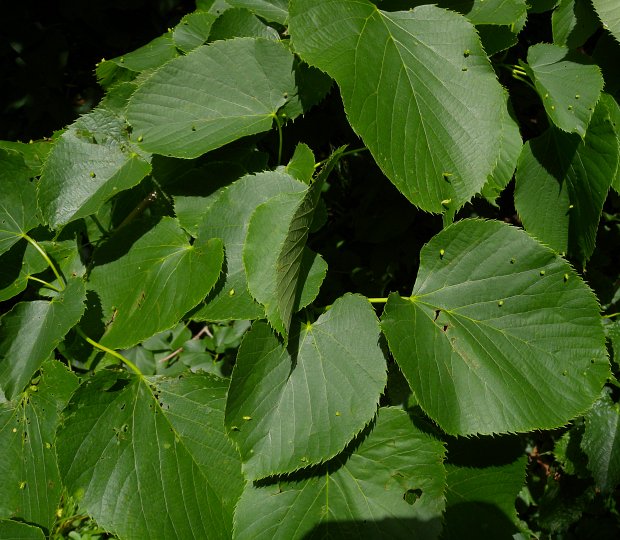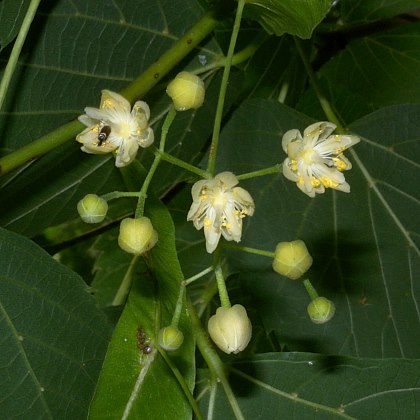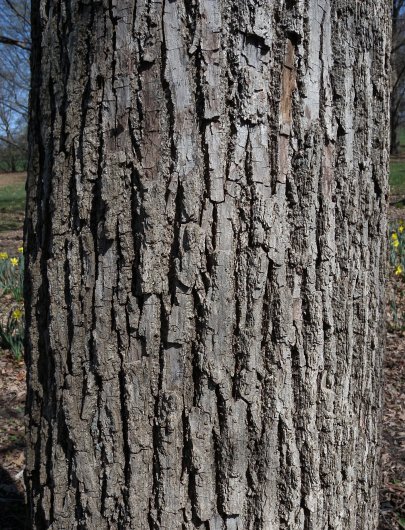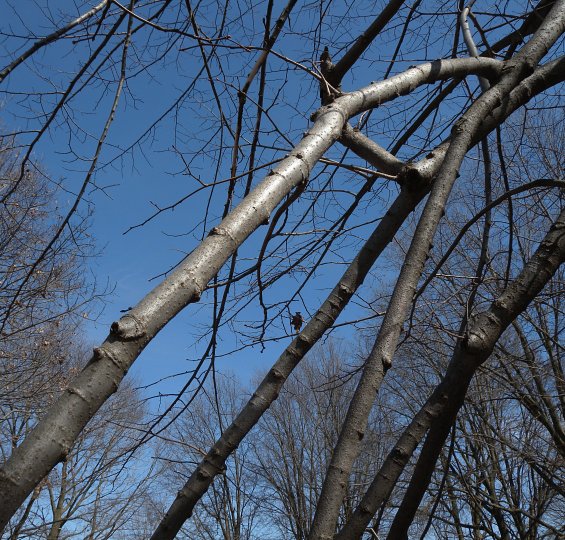
Drooping cymes of flowers about 1-3" across develop from the axils of the leaves. The peduncle of each cyme is about 4" long; the lower half of the peduncle adheres to about the middle of an elongated floral bract (about 4" long and ¾" across), while its upper half is naked. This floral bract is light green and linear-oblong to linear-oblanceolate in shape. The peduncle divides into pedicels with 5-20 flowers. Individual flowers are about ½" across, consisting of 5 cream-colored petals, 5 cream-colored sepals, a pistil with a white style, and several stamens with yellow anthers. The blooming period occurs during the early summer for about 2 weeks. The flowers are fragrant. Fertile flowers are replaced by small nutlets about ¼" across. At maturity during the fall, the nutlets are gray-brown, globoid, and canescent; they are dry, hard, and usually single-seeded. Because of the persistent bracts on their peduncles, the nutlets are distributed by the wind, although they usually don't travel far from the mother tree. The woody root system consists of widely spreading lateral roots. The deciduous leaves become yellow to yellowish green during the fall.

Cultivation: The preference is full sun to light shade, mesic conditions, and a rich loamy soil with abundant nitrogen and calcium. Young seedlings and saplings can tolerate moderate shade. A mature tree casts considerable shade that can kill grass and other vegetation around the base of its trunk.
Range & Habitat: The native American Basswood is occasional to common throughout Illinois (see Distribution Map). Habitats include mesic upland and bottomland woodlands, sandy woodlands, stabilized sand dunes near Lake Michigan, riverbanks, and slopes of wooded ravines. Because of its shade tolerance, American Basswood is a late successional to mature canopy tree in deciduous woodlands. Sometimes it is codominant with Sugar Maple (Acer saccharum). This tree is occasionally cultivated in yards and city parks. Because of its relatively thin bark, resistance to fire is poor, although this tree can resprout from its stumps.

Faunal Associations: The flowers of this tree are visited for nectar and/or pollen by honeybees, bumblebees, Halictid bees (including green metallic bees), various wasps, Syrphid flies, blow flies (Calliphoridae), and various moths (Robertson, 1929; Anderson, 1976; Wilhelm & Rericha, 2017). The moths typically visit the flowers at night. Many insects also feed destructively on American Basswood and other trees in this genus. They include the wood-boring larvae of long-horned beetles, leaf beetles, larvae of gall flies, plant bugs, lace bugs, aphids, armored scales, leafhoppers, treehoppers, larvae of horntails, larvae of moths, the Northern Walkingstick (Diapheromena femorata), and Introduced Basswood Thrips (Thrips calcaratus). Two spider mites, form galls on the leaves of American Basswood, the Basswood Gall Mite (Phytoptus abnormis) and Red Nail Gall Mite (Eriophyes tiliae). The Insect Table provides a more complete and detailed list of insects that feed on American Basswood and other trees in this genus.

Vertebrate animals also use American Basswood as a food source. Elk and White-tailed Deer feed on the leaves and twigs, the Cottontail Rabbit feeds on the bark of saplings during the winter, the North American Porcupine feeds on the wood, Franklin's Ground Squirrel feeds on the seeds, the White-footed Mouse and Deer Mouse feed on the buds and seeds of this tree (Martin et al., 1951/1961; Schneider et al., 2006; Hamilton, 1941). Many birds undoubtedly build nests in this tree, while various bats, like the Evening Bat (Nycticeius humeralis), use its cavities, exfoliating bark, etc., for roost sites (MuÌnzer, 2008).
Photographic Location: The photographs were taken at Crystal Lake Park in Urbana, Illinois, and at the Arboretum of the University of Illinois in the same city.

Comments: The wood of American Basswood is light, fine-grained, and soft. It has been used to make hand-carved articles, boxes, wooden toys, bodies of electric guitars, cheap furniture, and pulp for paper. The name 'Basswood' derives from the word 'bast.' This refers to the stringy inner bark of this tree, which was used to make rope, woven baskets, mats, and fish nets. In addition to 'Basswood,' trees in this genus are referred to as 'Linden' and 'Lime' trees. The name 'Basswood' usually refers to North American species, while 'Linden' and 'Lime' refer to European species. However, this distinction is not always observed: another common name of Tilia americana is 'American Linden.' One other species that is native to southern Illinois, Tilia heterophylla (White Basswood), is very similar to American Basswood, except that its leaf undersides are strongly whitened by minute hairs. Some authors consider this species to be a variety of American Basswood, or Tilia americana heterophylla. There are some European species in this genus that are common in cultivation, although so far there are no records of their naturalization in Illinois. One commonly cultivated species, Tilia cordata (Small-Leaved Linden), is similar to American Basswood, except that its leaves are substantially smaller in size (3" in length or less). Another European species, Tilia platyphyllos (Large-Leaved Linden), is also similar to American Basswood because its leaves are nearly as large in size (up to 6" in length). However, Large-Leaved Linden has hairy leaves and petioles; it also produces its flowers in smaller cymes that have only 3-7 flowers. A hybrid of Small-Leaved Linden and Large-Leaved Linden is also cultivated; it has characteristics that are intermediate between the parent species.